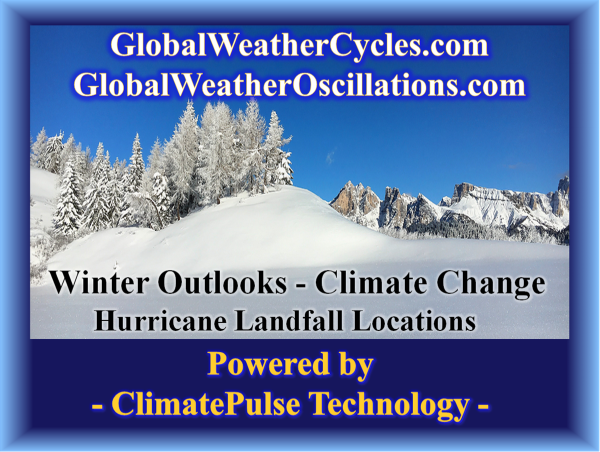An important factor for the upcoming winter and future winters is - the extent of Arctic Sea ice that helps to either create or inhibit formation of very cold Arctic air. A second very important influence is the state of the ENSO event for either an El Niño or La Niña along the Equatorial Tropical Pacific Ocean. The ESNO cyclical oscillations typically influence weather patterns in many regions around the world. The ENSO La Niña event during the 2025 winter caused a weather pattern that helped to provide colder air across much of the Central and Eastern areas of the United States – and also colder air over much of Northern Europe.
The upcoming 2026 winter will mostly have what is called ENSO Neutral Conditions - which are conditions halfway between the La Niña or El Niño weather patterns. This will also help to control the North Atlantic Oscillations that influence winter weather patterns across Europe. Just like the ENSO Neutral Conditions – the North Atlantic NAO will primarily have neutral conditions (halfway between NAO negative and positive).
Thus, the 2026 weather patterns will to some degree mimic last winter’s La Niña and NAO weather patterns – but at the same time - be a little erratic due to ClimatePulse variables described in the “Climate Change Watch” below.
The 2026 Outlook is available on GWO’s two websites: www.GlobalWeatherCycles.com and www.GlobalWeatherOscillations.com
GWO’s “Climate Change Watch” for 2030.
There will be some dramatic changes occurring during the next 5 winters - and this is why Professor David Dilley of Global Weather Oscillations has issued a “Climate Change Watch for 2030”. Several of the upcoming changes are touched upon below, and discussed in fuller detail within the winter outlook and GWO’s videos:
The North Atlantic Ocean has been experiencing warmer than normal water temperatures during the past 15 to 20 years. This is a natural cycle that is called “the North Atlantic Oscillation” (NAO). This natural cycle occurs about every 70 years and is currently causing warm ocean water temperatures across much of the North Atlantic. During the next 5 years, this cycle will be transitioning to a “cool water NAO phase that will last for about 50 years. The Pacific Ocean also has a recurring warm to cool water cycle called the PDO (Pacific Decadal Oscillation phase). This current warm PDO phase will likewise transition to a cool water PDO phase by 2030 and last for about 30 years.
Three other very important cycles will also transition during the next 5 years. The occurrence of solar sunspot cycles is scientifically associated with global warming and cooling cycles that have occurred during the past few hundred years. The current solar cycle reached its pinnacle in 2024 into early 2025 with dramatic displays of solar flares called “Northern Lights”. This signaled the ending of the active sunspot cycle - much like the finale of a fireworks display. The solar cycle is now weakening and transitioning toward a Solar Maunder Minimum that has historically been associated with global cooling cycles.
In addition, ClimatePulse electromagnetic gravitational cycles have been proven by Professor Dilley to be instrumental in causing 6 Global Warming Cycles during the past 1,100 years – and 5 recurring Global Cooling Cycles. The ClimatePulse Cycles occur like clockwork and will likewise transition the current global warming cycle to Global Cooling Cycle #6. A cooling cycle typically begins 200-years following the ending of the prior Global Warming Cycle. The prior warming cycle ended near the year 1830 - and the year 2030 is 200 years later.
More information is available within GWO’s 2026 Europe Winter Outlook and Professor Dilley’s 4 videos that walk you through the ClimatePulse cycles. The products are available on the websites www.GlobalWeatherCycles.com and www.GlobalWeatherOscillations.com
Professor David Dilley
Global Weather Oscillations
+1 352-789-4461
email us here
Visit us on social media:
Facebook
LinkedIn
YouTube
Legal Disclaimer:
EIN Presswire provides this news content "as is" without warranty of any kind. We do not accept any responsibility or liability for the accuracy, content, images, videos, licenses, completeness, legality, or reliability of the information contained in this article. If you have any complaints or copyright issues related to this article, kindly contact the author above.
![]()



